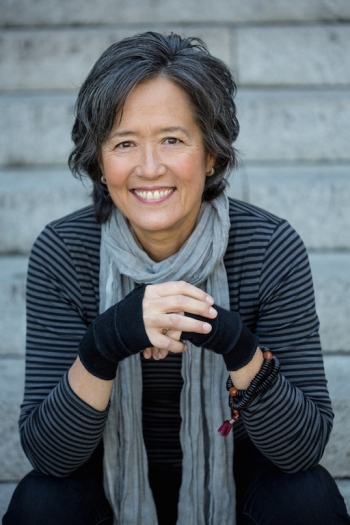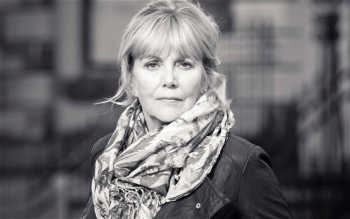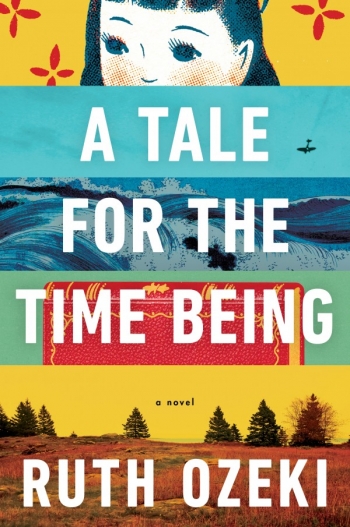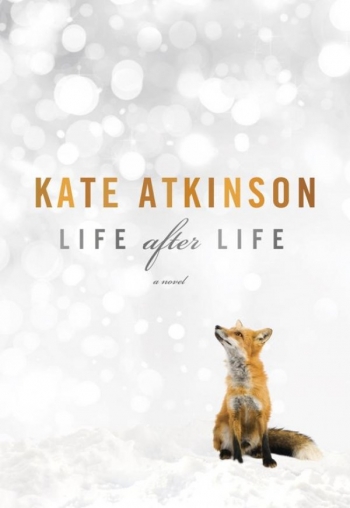A Tale for the Time Being, a vibrant novel with strong Buddhist themes, wants the reader to pay attention: “Hi!” the book begins, mimicking a text message or email chat. Fourth wall broken, the 2013 novel by Canadian author Ruth Ozeki engages us with repeated inquiries. “Who are you and what are you doing?” the charming, youthful narrator asks on the first page. “Are you in a New York subway car hanging from a strap, or soaking in a hot tub in Sunnyvale? . . . Do you have a cat and is she sitting on your lap? Does her forehead smell like cedar trees and fresh sweet air?” By asking these specific questions, the narrator—and through her, Ozeki the author—asks her readers to stop and look around. The question arises: right now, as I read this, what am I doing?
This awareness of the present moment runs throughout this brightly written, poignant, and thought-provoking novel. Ozeki is a Zen priest, and her understanding of Zen principles weaves together the novel’s disparate characters: Nao, a bullied girl in Tokyo; her grandmother, who lives in a monastery right in the path of the Tohoku tsunami; and Ruth, a projection of the author, who finds Nao’s diary washed up on a Canadian beach and becomes engrossed in her story. The multi-layered narrative swims between reality and fiction. Ruth, like us, knows that the tsunami hit Japan’s coast in 2011, but Nao, whose diary pre-dates the disaster, prods her audience with questions from the past.
The diary follows Nao’s struggling, emotionally damaged family in the early 2000s. She attempts to escape being bullied through the ghosts of family history and seclusion with her grandmother, an aged feminist nun. Meanwhile, present-day Ruth struggles to figure out who the author of the diary is and worries that Nao was a tsunami victim. Swept into the story, Ruth becomes more and more central to its outcome. In fact, Nao’s salvation depends on her grandmother—but also on Ruth, the diary reader, and therefore implicitly on us as readers, in the present day. Our engagement with the story connects the now of the narrative to the now of real life, binding the two together in a flexible, mutually affecting relationship.
Nao—a character whose name evokes the present time—calls herself a “time being.” Ozeki is playing with words, modulating between a creature who lives in time and a fleeting sense of the ever-changing now. The idea of now is a koan curled at the heart of the book. Ozeki picks at the concept, circles it, unpacks and repacks it—but she never quite settles on one way of deciding what now means. This refusal to accommodate simple answers gives complexity and satisfying depth to the story.
The central challenge for Ozeki’s characters is to step away from their own stories—even from the fixed narrative of the novel itself—and into the present moment.
“To do zazen is to enter time completely,” Nao tells us. This demand is then placed upon the reader. As Ruth is meditating, her husband asks her, “How long are you going to sit there for? Do you want me to come wake you up?” Although part of a domestic misunderstanding, his words also cut through at the reader: how long will we sit, self-involved and without self-awareness? Do we need a character to step forward and, sharp as a knife, slice us out of the story and into now?
Life After Life, a thrilling novel by British author Kate Atkinson, asks similar questions of the reader—but in a very different way. The novel concerns Ursula, a young woman born before World War I, who lives again and again the same life, subtly or greatly changed each time. At each death—accidental or suicidal, violent or natural—Ursula is reborn, starting from scratch. Over time, she becomes cognizant of her cyclical nature, and the question arises whether she can harness the power of her own rebirth to do good in the world.


















